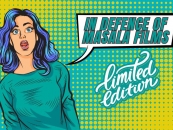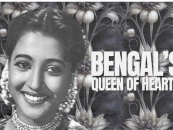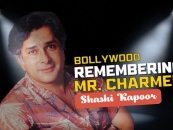-853X543.jpg)
The biography of Sanjeev Kumar
by Shantanu Ray Chaudhuri October 25 2021, 12:00 am Estimated Reading Time: 8 mins, 21 secsShantanu Ray Chaudhuri talks to Sumant Batra, who has co-written Sanjeev Kumar’s biography, An Actor’s Actor, with Hanif Zaveri and presents an extract from the un-put-down-able book!
The Thakur in Sholay, the mental patient in Khilona, the doctor in search of a lost love in Mausam, the hotelier in Aandhi, the nawab in Shatranj Ke Khilari, the poles-apart twins in Angoor, the husband with a glad eye in Pati Patni Aur Woh and the nine characters in one film, Naya Din Nayee Raat. If ever there was a chameleon as an actor, it was Sanjeev Kumar. He was an actor unlike any - willing to play the ‘father’ to his contemporaries; never needing six packs even as he flaunted his paunch in that evergreen song ‘Thande thande pani se’. Endlessly mimicked and imitated, it is incredible that for 35 years after his death, there have been no biographies of this exceptional actor. Sumant Batra and Hanif Zaveri set that anomaly right with their book, An Actors’ Actor. Sumant Batra spoke to Shantanu Ray Chaudhuri.
2.jpg)
It’s been close to 35 years since the death of Sanjeev Kumar. Why do you think there has been no book chronicling his life and art even as publishing on Hindi cinema stars has taken off in the last few years?
Sanjeev Kumar was a very shy person and an introvert. He had no greed for publicity. In his entire film career, he never kept a personal public relations officer. Most of his contemporaries considered that as an essential. He guarded his personal life very dearly. Only his family and few select friends from the industry had access to his personal life. He kept the media away from his family. A book while he was alive was out of the question. But I would think that after his death, there would have been a deep interest in writing his biography. A biography would however have been possible only with cooperation from his family members. I guess no one tried hard enough to convince the family. We were fortunate that Hanif Bhai had access to the family members and was able to convince them. That credit goes to Hanif Bhai.
You are quite a fan of Sanjeev Kumar. Tell us something about your engagement with his films and how that led towards the idea for the book. What do you think was his biggest contribution/feat as an actor?
I had just stepped into my teens when I first watched Sholay, which introduced Sanjeev Kumar to me. Neither had I heard of the actor before that, nor did I pay any attention to his performance in the film, its grandeur being too overwhelming for my age and time. It was a few years later, while watching Naya Din Nayee Raat on Doordarshan, that I noticed the actor and his extraordinary talent. In what is doubtlessly Sanjeev Kumar’s magnum opus, he played nine roles representing the nine rasas, laying out one character after the other. His range left me spellbound. I instantly became an admirer of this great actor. Since then, there isn’t a film of his that I have not watched.
Hanif Bhai had just finished extensive rounds of interviews with the family members of Sanjeev Kumar and other persons associated with the late actor when a common friend introduced us. If at all I ever wanted to write a book on cinema, it had to do with Sanjeev Kumar. I enthusiastically offered to write the book. Hanif Bhai accepted my offer.
Sanjeev Kumar was in a league of his own, one of cinema’s most prolific stars, one of its finest actors. All he cared about was the integrity of his performance and the intensity of his role. His style informs the works of many actors who came after him.
Give us an insight into how the book came together, the process of getting it out there. What has been the most difficult aspect of the process?
Once we agreed to work together, we sat together over many months to decide the structure of the book and its narrative. I am based in Delhi and Hanif Bhai is in Mumbai. I met him whenever I travelled to Mumbai for my professional work, which was quite frequently. Hanif Bhai had gathered extensive notes from the interviews. Selecting relevant information was the most time-consuming task. Then started the actual writing of the book, stitching pieces of information together to tell the story of his personal and professional journey. Unfortunately, the book got delayed due to the two lockdowns. But for this disruption, it would have been out last year.
Given that the actor has been dead for over 35 years and a lot of the filmmakers he worked with are gone, how difficult was it to get an insight into his craft?
The book is based mainly on information resulting from extensive interviews held with the family members of Sanjeev Kumar, his co-actors, filmmakers and other artists. As a film journalist, Hanif Bhai had also interviewed Sanjeev Kumar a few times. Of course, we had to carefully corroborate and verify the information provided by the interviewees from other sources as Sanjeev Kumar had passed away over three decades ago when the interviews were conducted. Memories had faded and people were at times unsure. We had to undertake extensive research to ascertain the veracity of the facts and where possible, other information. The researchers at Indian Cinema Heritage Foundation worked hard to dig out as much material as they could from the Foundation’s archive.
Any remarkable discovery that you made during the book – either in terms of his life or his craft or any individual film – that you were not aware of and would like to share with our readers?
Unlike the popular perception that he was a loner who preferred to spend time alone, I discovered that he loved the company of his friends. He was what one would call yaaron ka yaar. Shatrughan Sinha’s emotional foreword endorses that finding.
For this generation of actors and even viewers, used to seeing 8-pack abs and toned bodies, what are the lessons Sanjeev Kumar’s art has? How relevant is the actor’s actor in 2021?
I am not qualified to decipher his acting or roles as an expert. I am a fan of the actor, a huge fan. My contribution is that of an admirer of his films. The book is a tribute to the late actor’s tragically short but impactful life and career - from his childhood years to his foray into cinema, from the initial struggle to his breakthrough, the episodes and tragedies that shaped his life and career, his unfulfilled dreams. In terms of the writing and style, the book is in some way an imitation of Sanjeev Kumar’s style of acting - simple, free flowing and straight from the heart.
I would, however, like to add this: Sanjeev Kumar once said that before he joined the stage, he aspired to be like other actors who played romantic roles and sang songs, running around trees. Working on stage changed his concept. In an interview, he once advised newcomers to perform on stage.
1.jpg)
An extract from the book:
Hari was off to a good start, but he still had a long way to go. In a bid to meet prospective directors and producers, he would walk long distances -from Chembur Railway Station to RK Studio, from Bhuleshwar to Famous Studio, Mahalaxmi, from Andheri Railway Station to Mohan Studio; he walked and walked and kept walking. He wasn’t alone on his journey. Jamnadas often accompanied him, and at times even went alone on his behalf.
Funds were perpetually short. Hari scrimped, saved and cut corners wherever he could. He stopped buying cigarettes and would borrow his friends’ telephones to make phone calls. He maintained a list of producers and directors and made it a point to visit them in person to ask for work. Meeting them wasn’t easy; travelling required money and the efforts often came to naught.
Even though Shantaben supported Hari with the occasional buck, there would still never be enough for clothes. His only clothes were two pairs of white kurta pyjamas, which he had to wash every night so that there would be a fresh set on the next day. ‘Heroes’ don’t dress like that… but Hari did.
Filmalaya Production House chose promising students from Filmalaya Acting School and offered them small roles in their films. On one such occasion, Ram Mukherjee sent his assistant to find him a student actor for his movie Hum Hindustani (1960), starring Sunil Dutt and Asha Parekh. The role was small, but the actor would be paid. Upon being approached, Hari immediately accepted the offer of playing a police inspector for Rs 12 per shift. Hari’s role had no dialogues, but he gave it his hundred percent; this was the first time he was facing the camera after all!
Rs 12 per shift was a good sum of money for Hari. He was proud of what he had earned and was elated at handing over his hard-earned money to his mother. Her approval mattered the most to him. Delighted, Shantaben took Hari to Mumba Devi’s temple at Zaveri Bazaar and donated a part of his earnings to the temple’s fund. When Hari took his mother to watch the movie, and the screen filled up with a shot of his face in close-up, he couldn’t help but point to his mother and childishly exclaim, ‘Baa, jo main chun (Mother, that’s me)!’ Barely catching a glimpse of her son, Shantaben asked him if she would see him on the screen again. Hari laughed as he assured her that she would if she came and watched the movie again.




-173X130.jpg)
-173X130.jpg)
-173X130.jpg)


-173X130.jpg)

-173X130.jpg)